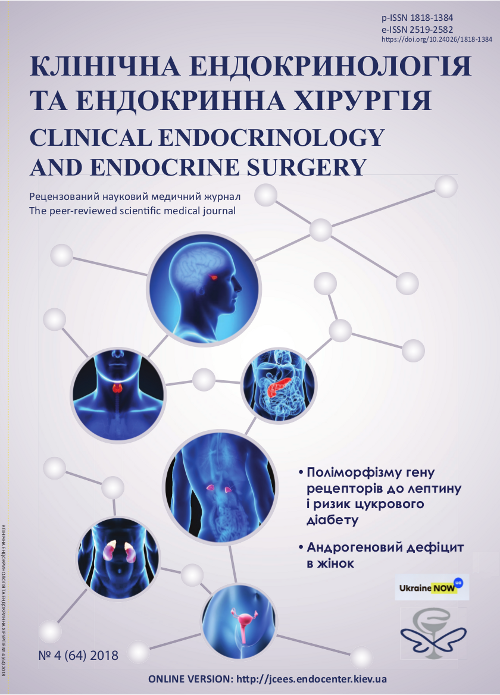The role of a novel agent in treating diabetic polyneuropathy in its various stages of manifestation and its effect on the expression of genes of the reduced folate carrier group
DOI:
https://doi.org/10.24026/1818-1384.4(64).2018.150232Ключові слова:
diabetic polyneuropathy, benfothiamine, treatmentАнотація
Aim: To study the efficacy of benfothiamine in treating patients with diabetic polyneuropathy (DPN) in its various stages of manifestation.
Methods. The first stage of the study involved 45 patients with positive Diabetic Neuropathy Symptom (DNS) score, 28 females, 17 males with type 2 diabetes and average duration of diabetes 7-10 years. All the participants were assessed before the commencement of therapy (benfothiamine 300 mg) and after 6 weeks of therapy. Participants were assessed using the DNS score, biothesiometer, monofilament test. CBC, kidney profile, LFT, glycosylated haemoglobin were measured in all the subjects. All patients were questioned regarding the presence or otherwise of symptoms, either positive or negative indicating the presence of neuropathy. The questionnaire used was the DNS score. The score is based upon the regular occurrence of four different symptoms of distal sensory polyneuropathy, including tingling, burning, numbness and unsteadiness of gait. The score has a range of 0–4, and a score of ≥1 is considered indicative of DSPN.
Results. The DNS score in 19 females decreased from +4 to +2 whereas in the male group in 12 patients the DNS score decreased from +4 to +2.5. Out of the 28 females 14 had moderate sensory loss on the biothesiometer with voltage ranging between 18-24 volts, 2 patients had severe sensory loss with voltage 38-40, and 12 patients had mild sensory loss with voltage between 17-25. In the male group, 10 patients had moderate sensory loss with voltage ranging between 26-34 volts, 5 patients had mild sensory loss with voltage between 15-22 volts, and 2 patients had normal values. Upon completion of the 6 week period on benfothiamine therapy the threshold of sensory loss decreased by 5-8% in the patients with moderate loss.
Conclusion. The significance of benfothiamine in clinical practice has also been demonstrated in many clinical trials with variable trial structures, patient groups and history of diabetes. In the first stage of our study we found that patients with moderate sensory loss were the ones who benefitted the most from benfothiamine therapy
Посилання
Hammes HP, Du X, Edelstein D, et al. Benfothaimine blocks three major pathways of hyperglycemic damage and prevents experimental diabetes. Nat Med. 2003 Mar; 9(3):294-9.
Berrone E, Beltramo E, Solimine C, Ape AU, Porta M. Regulation of intracellular glucose and polyol pathway by thiamine and benfothiamine in vascular cells cultured in high glucose. J Biol Chem. 2006 Apr 7; 281(14):9307-13.
Beltramo E, Berrone E, Buttiglieri S, Porta M. Thiamine and benfothiamine prevent increased apoptosis in endothelial cells and pericytes cultured in high glucose. Diabetes Metab Res Rev. 2004 Jul-Aug; 20(4):330-6.
##submission.downloads##
Опубліковано
Як цитувати
Номер
Розділ
Ліцензія
Авторське право (c) 2018 Клінічна ендокринологія та ендокринна хірургія

Ця робота ліцензується відповідно до Creative Commons Attribution 4.0 International License.





